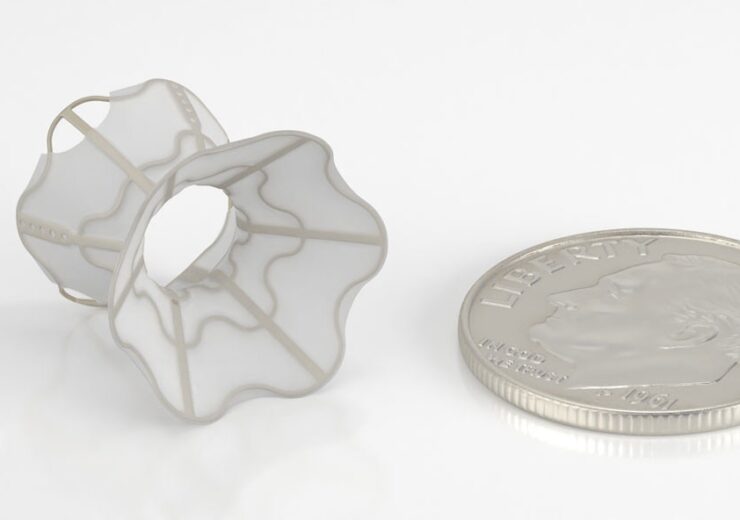The RELIEVE-HF trial of the Ventura Shunt System includes patients with reduced and preserved left ventricular function etiologies for heart failure

V-Wave Ventura Interatrial Shunt. (Credit: PR Newswire/ V-Wave Ltd.)
V-Wave, announced today the completion of enrollment in RELIEVE-HF, a prospective, randomized, double-blinded, sham-controlled, multi-center pivotal clinical trial. The RELIEVE-HF study is assessing the safety and effectiveness of the V-Wave Ventura Interatrial Shunt for the treatment of heart failure (HF) with the potential to reduce future hospitalizations as well as improve symptoms and quality of life for HF patients. The study enrolled 508 advanced HF patients on maximally tolerated guideline directed medical therapy (GDMT), who were randomized 1:1 to either the Ventura Shunt treatment arm or a sham control arm. Patients were enrolled in 101 hospitals from 11 countries. The primary analysis of the randomized cohort will take place after the last patient enrolled completes 12 months of follow up, with primary effectiveness follow-up ranging from 12 to 24 months. RELIEVE-HF also included an open label roll-in arm with a cohort of an additional 97 patients, for a total of 605 patients inclusive of both the randomized and roll-in study arms. The roll-in arm patients all received the Ventura device and to date, no procedure- or device-related major adverse cardiac or neurological events have been reported.
HF is the end-stage of most forms of heart disease, affecting more than six million US patients and 60 million people worldwide. Despite advances in HF therapy, premature death, recurrent hospitalizations, and deteriorating quality-of-life remain a large burden to patients, their families, and healthcare systems worldwide. The most common reason for hospitalization is breathlessness from fluid buildup in the lungs known as pulmonary congestion, which is driven by elevations of blood pressure in the left atrium of the heart.
The Ventura Shunt is an investigational device that has received Breakthrough Device Designation from the FDA and CE Marking in the EU. The shunt is implanted during a standard minimally invasive catheter-based procedure. Patients typically are discharged after an overnight stay. The shunt is designed to create a small amount of blood flow from the left atrium to the right atrium sufficient to lower elevated left atrial pressure while protecting the right heart from failing due to blood volume overload.
“We believe that an optimally sized shunt implanted in a population with a risk profile most likely to show benefit, has the best likelihood of being a winning combination,” said Dr. Neal Eigler, MD, CEO of V-Wave. “We will await completion of follow-up and only then unblind the study to perform the primary analysis for safety and effectiveness.”
Source: Company Press Release
